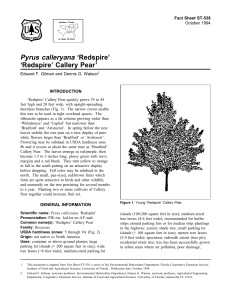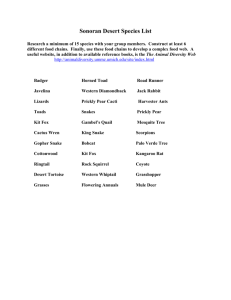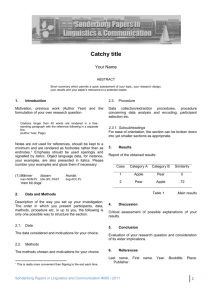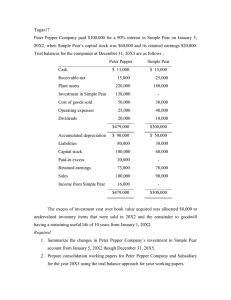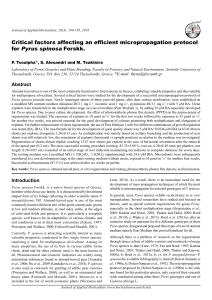Callery Pear / Bradford Pear Weed of the Week
advertisement
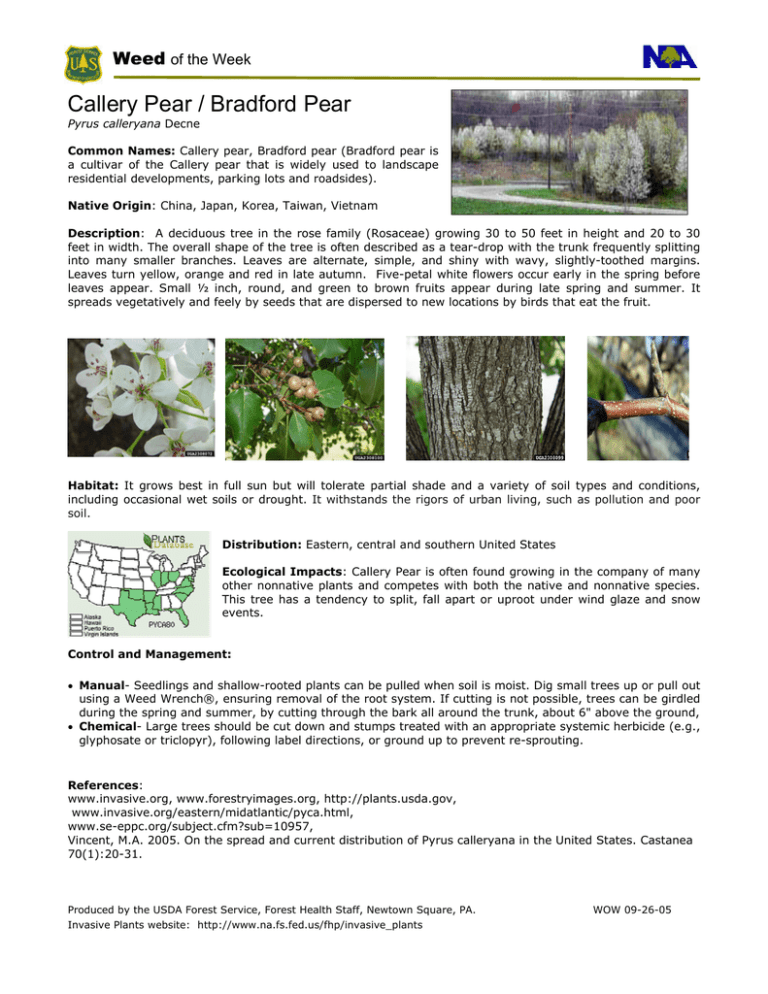
Weed of the Week Callery Pear / Bradford Pear Pyrus calleryana Decne Common Names: Callery pear, Bradford pear (Bradford pear is a cultivar of the Callery pear that is widely used to landscape residential developments, parking lots and roadsides). Native Origin: China, Japan, Korea, Taiwan, Vietnam Description: A deciduous tree in the rose family (Rosaceae) growing 30 to 50 feet in height and 20 to 30 feet in width. The overall shape of the tree is often described as a tear-drop with the trunk frequently splitting into many smaller branches. Leaves are alternate, simple, and shiny with wavy, slightly-toothed margins. Leaves turn yellow, orange and red in late autumn. Five-petal white flowers occur early in the spring before leaves appear. Small ½ inch, round, and green to brown fruits appear during late spring and summer. It spreads vegetatively and feely by seeds that are dispersed to new locations by birds that eat the fruit. Habitat: It grows best in full sun but will tolerate partial shade and a variety of soil types and conditions, including occasional wet soils or drought. It withstands the rigors of urban living, such as pollution and poor soil. Distribution: Eastern, central and southern United States Ecological Impacts: Callery Pear is often found growing in the company of many other nonnative plants and competes with both the native and nonnative species. This tree has a tendency to split, fall apart or uproot under wind glaze and snow events. Control and Management: • Manual- Seedlings and shallow-rooted plants can be pulled when soil is moist. Dig small trees up or pull out using a Weed Wrench®, ensuring removal of the root system. If cutting is not possible, trees can be girdled during the spring and summer, by cutting through the bark all around the trunk, about 6" above the ground, • Chemical- Large trees should be cut down and stumps treated with an appropriate systemic herbicide (e.g., glyphosate or triclopyr), following label directions, or ground up to prevent re-sprouting. References: www.invasive.org, www.forestryimages.org, http://plants.usda.gov, www.invasive.org/eastern/midatlantic/pyca.html, www.se-eppc.org/subject.cfm?sub=10957, Vincent, M.A. 2005. On the spread and current distribution of Pyrus calleryana in the United States. Castanea 70(1):20-31. Produced by the USDA Forest Service, Forest Health Staff, Newtown Square, PA. Invasive Plants website: http://www.na.fs.fed.us/fhp/invasive_plants WOW 09-26-05
